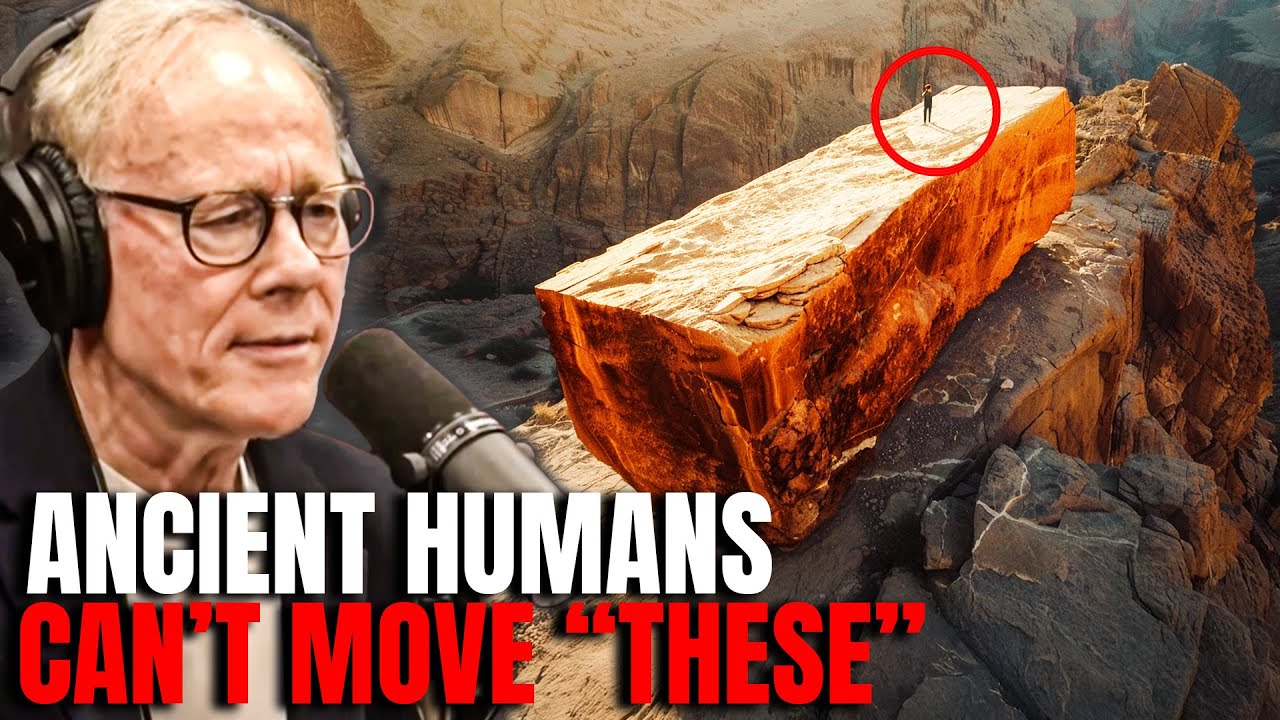Archaeologists Reveal The World’s HEAVIEST Stone Blocks Ancient Humans Could Never Move
**The Mystery of Baalbek and the Korean Dolmen: When the Past Challenges the Present**

In the heart of ancient Lebanon, a crossroads of civilizations for thousands of years, lies a mystery that has puzzled archaeologists for centuries: Baalbek. It is not only a testament to cultural exchange, but also a testament to an ancient construction technique that seems to defy the limits of time. Stone blocks weighing more than a Boeing 747 are placed on top of each other with near-perfect precision, raising the question: How could the ancients have achieved this?
Located in the fertile Beka’a Valley, the ancient city of Baalbek was once a Phoenician sanctuary, and later a cultural center for the Greeks, Romans, Byzantines, and Muslims. However, it was only in the 19th century that Western scholars began to seriously explore its mysteries. At the heart of Baalbek is the Temple of Jupiter, one of the largest structures in the Roman Empire. Beneath the temple’s foundations are three massive stone blocks – known as the “Trilithons” – each measuring more than 19 metres long, more than 4 metres high and weighing up to 1,000 tonnes.
Nearby, in an ancient quarry, even larger blocks have been discovered, such as the “Stone of the Pregnant Woman”, which weighs around 1,000 tonnes, and another discovered in 2014 that weighed 1,650 tonnes. These blocks are still lying in the bedrock, as if left unfinished by ancient hands that once held lost secrets.
The precision with which the blocks were cut and joined without mortar suggests an incredible level of engineering. Many theories have been put forward: from the use of sledges and rollers, to pulley systems, earthen ramps, and thousands of workers or draft animals. Traces of tools, ancient paths, and lever-lifting methods have gradually revealed clues, but the biggest question remains: was it something beyond the capabilities of the people of that time?
Besides scientific research, local legends claim that gods or giants built this structure. These stories may be just myths, but they reflect the deep reverence that people have for a monument that has transcended time.
On the other side of Asia, another wonder has also amazed archaeologists: the dolmen (ancient stone tombs) in Korea. Built during the Neolithic and Bronze Ages, the large stone blocks here are also a testament to the superior technical level of ancient societies. Some dolmens are up to 7 meters long, weigh tens of tons, and were built with incredible precision in position and structure.
These stones were often transported from distant quarries by rolling them on tree trunks, similar to the ancient way of building Stonehenge in England or the Moai statues on Easter Island. Once they arrived, earthen ramps and a system of levers helped them to move the stones into place. In addition to being burial sites, many dolmens were also built to align with astronomical phenomena such as the summer or winter solstices, demonstrating the ancients’ deep understanding of astronomy and mathematics.
After the Japanese colonial period of Korea (1910–1945), the first official archaeological excavations began, opening up a serious scientific exploration of the dolmens. By the late 20th century, thanks to modern tools such as carbon dating, ground-penetrating radar, 3D technology, and geographic information systems (GIS), Korean archaeologists had discovered the structures, ages, and original purposes of these structures.
International recognition came in the early 21st century, when several Korean dolmen sites were designated as UNESCO World Heritage Sites. This not only raised awareness of preservation but also made these ancient structures into global cultural icons.
When comparing the construction techniques of Korean dolmen with structures such as the Egyptian pyramids or the Maltese temples, we see clear differences in purpose, design, and construction methods. Pyramids are symbols of a stratified society, reserved for the elite. Meanwhile, Korean dolmen reflect a large community and share rituals and beliefs. The way they selected, shaped, and assembled the stones reveals an understanding of earth mechanics, engineering, and astronomy that goes back thousands of years.
Whether it’s the giant stones at Baalbek or the mysterious dolmen in Korea, they all make us wonder: What about the past do we not yet fully understand? These structures are not just archaeological relics, but powerful reminders of the potential of humans—ancient and modern—to push the limits of what once seemed impossible.








